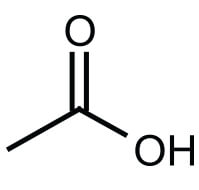Acids
Acids are defined as substances that have a sour taste, a low pH (<7), and cause litmus paper to turn red. They also react with bases (yielding water and ionic compounds called salts) and produce hydrogen gas when used to dissolve metals such as zinc and iron.
Read MoreTop Categories
Featured Products
Sorry, there are currently no special offers at this time.
Check back throughout the year to find ways to save or view all of our promotions.
Honeywell Inorganic Trace Analysis Brochure
Learn more about high-purity Honeywell Fluka TraceSELECT acids, bases, solvents, and salts for trace metal analyses.
- Honeywell Inorganic Trace Analysis Brochure (468.9 KB)
Fisher Chemical High-Purity Acids Data Sheet
Read about Fisher Chemical Optima and TraceMetal products and other acids that can help you improve your results.
MilliporeSigma High-Purity Acids and Bases Brochure
Browse the high-purity MilliporeSigma lines of OmniPure and OmniPure Plus acids for trace metal analyses.
J.T.Baker Brand High-Purity Acids Brochure
Find high-purity acids from the J.T.Baker ULTREX II and INSTRA-ANALYZED product lines.

















